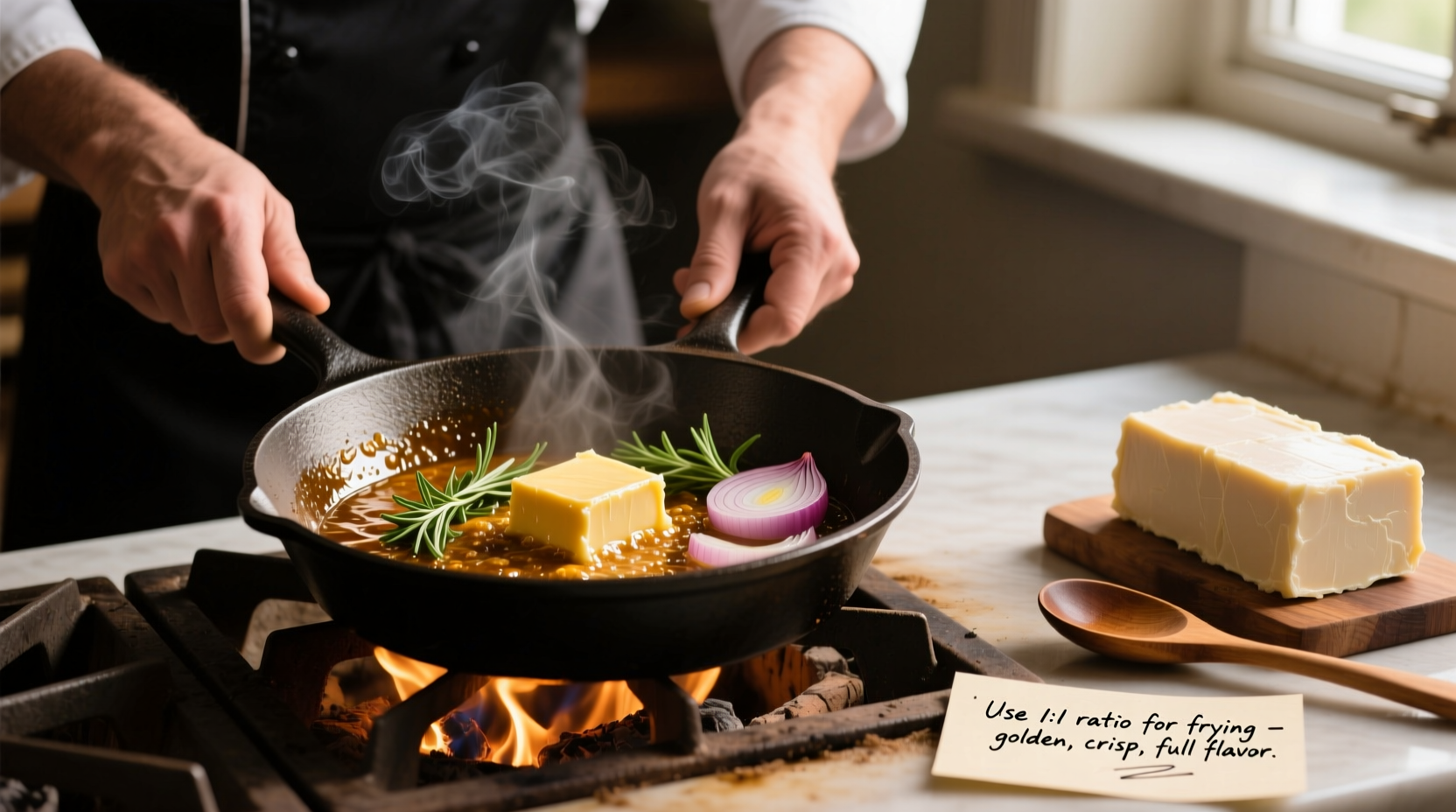The Timeless Power of Beef Tallow in Modern Kitchens
For centuries before industrial seed oils dominated grocery shelves, beef tallow was the cooking fat of choice across cultures. Today's culinary revival recognizes what our ancestors knew: properly rendered beef fat offers unmatched performance for high-heat cooking while delivering nutritional benefits modern science validates. Let's explore how to harness this traditional ingredient effectively.
Understanding Beef Tallow: More Than Just Fat
Beef tallow forms when beef suet (the hard fat surrounding kidneys) undergoes rendering—a slow melting process that separates pure fat from connective tissue. The resulting product contains approximately 50% monounsaturated fats, 40% saturated fats, and 10% polyunsaturated fats, creating remarkable stability during cooking.
| Cooking Fat | Smoke Point | Saturated Fat % | Best Cooking Method |
|---|---|---|---|
| Beef Tallow | 400°F (204°C) | 40% | Deep frying, roasting, searing |
| Avocado Oil | 520°F (271°C) | 12% | High-heat searing |
| Extra Virgin Olive Oil | 320°F (160°C) | 14% | Low-heat sautéing, dressings |
| Soybean Oil | 320°F (160°C) | 15% | General frying (limited reuse) |
This comparison from USDA FoodData Central shows why tallow outperforms many modern oils for high-heat applications. Its balanced fat composition prevents rapid oxidation while delivering superior browning—critical for achieving that perfect crust on proteins and vegetables.
When Beef Tallow Shines: Practical Applications
Understanding context boundaries helps determine when tallow works best. This fat excels in specific scenarios while proving less suitable for others:
Ideal Uses for Beef Tallow
- Frying potatoes—creates unmatched crispness without greasy texture
- Searing steaks—promotes even browning at optimal temperatures
- Roasting vegetables—enhances caramelization of root vegetables
- Traditional recipes—essential for authentic British Yorkshire puddings and Mexican carnitas
Limited Applications
- Avoid in delicate fish preparations where neutral flavor is preferred
- Not ideal for baking where solid fat at room temperature is required
- Use sparingly in dishes where beef flavor might overpower subtle ingredients
Mastering Temperature Control with Tallow
One of the most common mistakes home cooks make is misjudging optimal cooking temperatures. Beef tallow performs best when heated gradually to its sweet spot:
- Start with cold tallow in your cooking vessel
- Heat slowly over medium-low flame for 5-7 minutes
- Test readiness by adding a small breadcrumb—if it sizzles immediately without burning, temperature is correct (approximately 350-375°F)
- Maintain temperature between 325-375°F for frying to prevent degradation
Exceeding 400°F causes tallow to break down, creating off-flavors and potentially harmful compounds. A reliable thermometer prevents this common error.

Sourcing Quality Tallow: What Matters
Not all tallow delivers equal results. For best outcomes:
- Choose grass-fed sources when possible—higher in beneficial CLA and omega-3s according to research from National Institutes of Health
- Look for unrefined, pure tallow without additives or hydrogenation
- Consider rendering your own from suet purchased at butcher shops
Simple Rendering Process for Homemade Tallow
Creating your own tallow ensures purity and freshness:
- Finely chop 2 pounds beef suet
- Place in heavy-bottomed pot with ¼ cup water
- Heat on lowest setting for 3-4 hours until fat melts completely
- Strain through cheesecloth into jars
- Cool to room temperature before sealing
This traditional method produces clean, flavorful tallow perfect for beef tallow for deep frying recipes and other high-heat applications.
Storage Solutions for Maximum Freshness
Proper storage extends tallow's shelf life significantly:
- Store in airtight containers away from light
- Refrigerated tallow lasts 6-12 months
- Freeze for up to 2 years without quality degradation
- Always use clean utensils to prevent contamination
Unlike vegetable oils that can turn rancid quickly, properly stored tallow maintains quality due to its stable fat composition.
Three Classic Dishes Transformed by Beef Tallow
Crispy Roasted Potatoes
Toss cubed potatoes with melted tallow (1 tablespoon per pound), rosemary, and sea salt. Roast at 400°F for 35-40 minutes until golden brown. The high smoke point prevents burning while promoting perfect crispness.
Perfectly Seared Steak
Heat 2 tablespoons tallow in cast iron until shimmering but not smoking. Sear steak 2-3 minutes per side for medium-rare. The tallow's neutral beef flavor enhances rather than competes with the meat.
Traditional Yorkshire Puddings
Heat 2 tablespoons tallow in each muffin cup at 425°F for 5 minutes. Pour batter immediately into hot fat for maximum rise and crisp edges—a technique requiring tallow's specific properties.
Avoiding Common Tallow Mistakes
Even experienced cooks encounter pitfalls with this traditional fat:
- Overheating—causes smoking and off-flavors; maintain below 400°F
- Reusing too many times—discard after 3-4 frying sessions for best results
- Mixing with incompatible oils—don't blend with low smoke point oils
- Improper storage—exposure to light accelerates oxidation
Understanding these limitations ensures consistently excellent results when exploring how to cook with beef tallow.
Embracing Tradition with Modern Knowledge
Beef tallow represents a perfect marriage of traditional wisdom and modern nutritional understanding. By respecting its properties and limitations, home cooks can achieve professional-quality results while benefiting from a cooking fat that's stood the test of time. Whether you're perfecting the art of beef tallow vs vegetable oil for frying or exploring traditional recipes using beef tallow, this versatile ingredient deserves a place in every serious cook's pantry.











 浙公网安备
33010002000092号
浙公网安备
33010002000092号 浙B2-20120091-4
浙B2-20120091-4